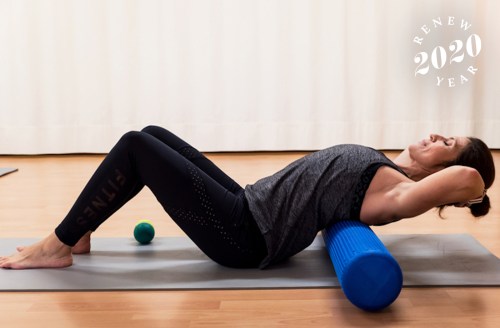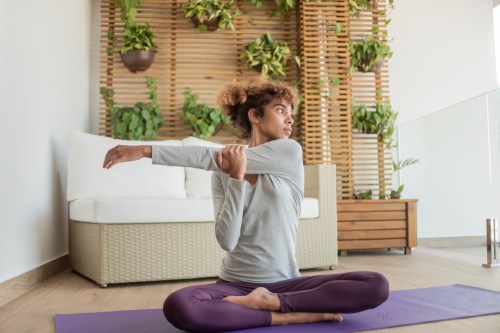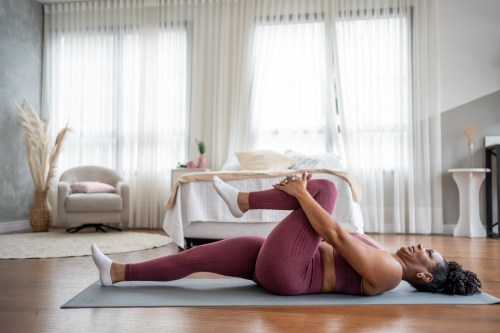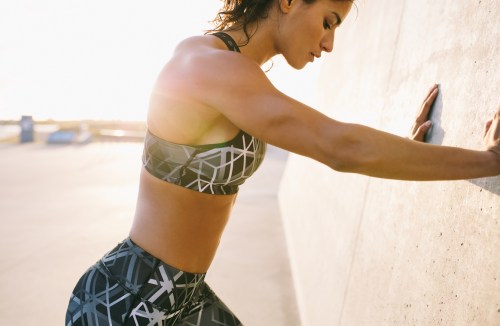How to use your foam roller for lymphatic drainage (because it works for that too)
Experts explain how to use foam rolling for lymphatic drainage, which adds to all of the benefits you're already getting with the recovery device.

Foam rolling is one of the most dependable ways to relieve muscle soreness, get myofascial release, and help with flexibility. Another benefit for your body? Foam rolling helps with lymphatic drainage, too, which means that fluid buildup around your fascia gets broken up, allowing you to move better.
“The network of lymph is directly connected to the fascia, which sits right underneath the skin,” says Esther Gauthier, founder of Aqua Studio in New York, where you can now find foam-rolling classes on the studio’s menu of offerings. “This vast network of connective tissue surrounds and stabilizes all muscles, organs, joints, and bones, and plays an important part in the internal health of our bodies.” With everyday stressors, however, she points out that your body can experience a stagnation of the lymphatic fluid along with inflammation in the body, which is where foam rolling comes in. “Foam rolling oxygenates the blood, which will hydrate the fascia, activate your lymphatic system, and help to create movement and flush the buildup.” In other words, it’s a great lymphatic drainage exercise.
The good news is that you don’t have to really change much up in terms of your foam rolling technique in order to reap the benefits of lymphatic drainage, because it happens naturally with the pressure you’re applying. “When you foam roll, you relax muscle tension, you activate your lymphatic system, you reduce pain and soreness—it all goes hand in hand,” says Gauthier. That said, there are certain factors that’ll up the lymphatic drainage benefits of foam rolling even more—keep scrolling for what you need to know.
1. Roll from the bottom up: “You want to push everything up from your feet,” says Piret Aava, founder of Body Roll Studio in New York, a new lymphatic rolling studio. “Start with the bottom of the body and work upwards.” It can be hard to foam roll your feet, so Aava recommends using a tennis ball for this. Gauthier echoes this, noting that you should roll from your ankles to your knees, then to your hip joint, then the upper body, all “towards the heart,” which helps with the distribution of lymph throughout the body.
2. Don’t forget key areas: It can be tempting to rush through foam rolling sequences, but make sure to hit the nooks and crannies of the body (especially ones like hips and the shoulders and neck, which get impossibly tight). “A good one is to roll the side of your neck down to your shoulder,” says Aava. “Though you would need a smaller roller for this, or you could use a gua sha for the targeted area.”
3. Try a textured foam roller: You can use any type of foam roller, but Gauthier says that the kind with tiny bumps or patterns on them “will mimic the fingers of a masseuse more so than a flat roller,” she says. Vibrating foam rollers work well too, says Aava, who points out that the vibrations can help ease the pain that comes along with rolling out tension, while also manipulating the lymph to help get things moving.
Be sure to check out our episode of What the Wellness in which we visit Aqua Studio for a workout that promotes lymphatic drainage:
Read all about the TRX Rocker, which puts a whole new spin on foam rolling. And here’s how full body gua sha can work to relieve muscle tension, too.
Sign Up for Our Daily Newsletter
Get all the latest in wellness, trends, food, fitness, beauty, and more delivered right to your inbox.
Got it, you've been added to our email list.










